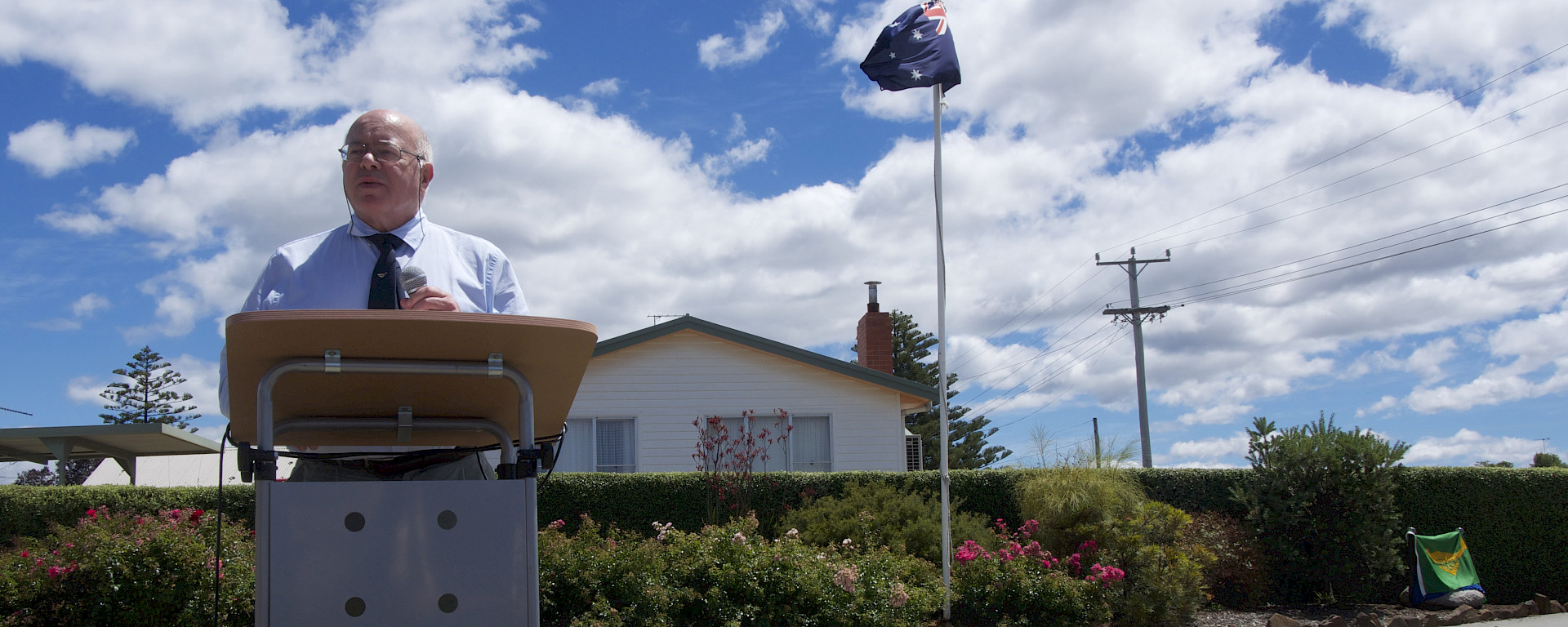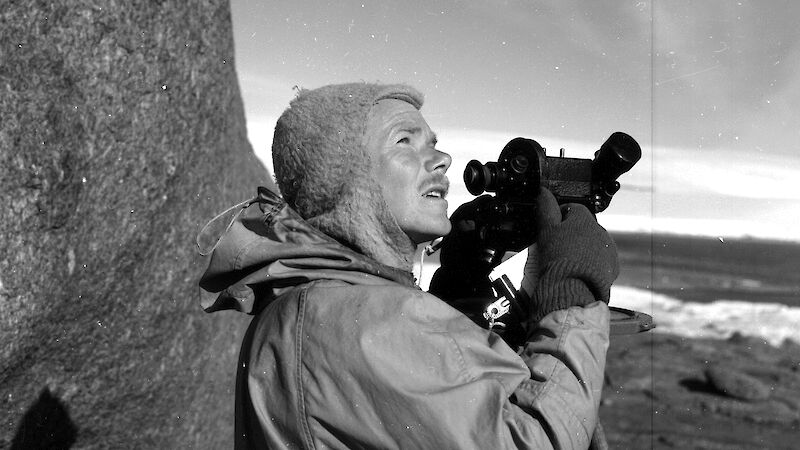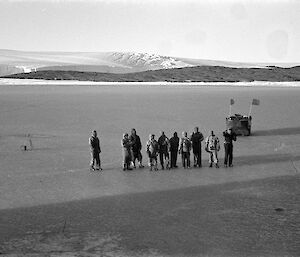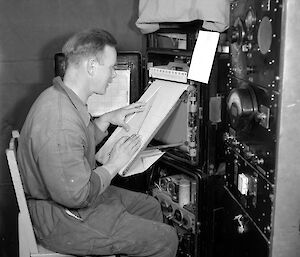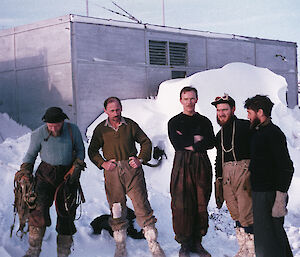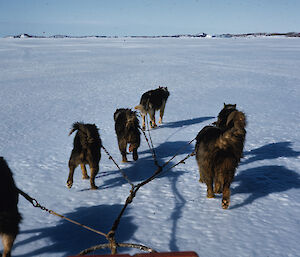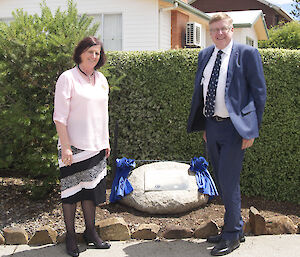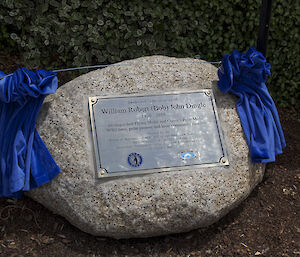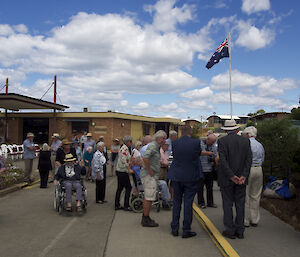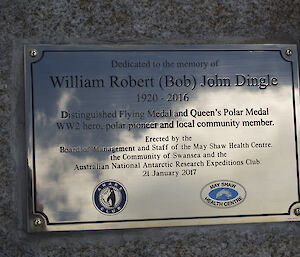The Antarctic community and the small Tasmanian town of Swansea commemorated an Antarctic explorer and war hero on Saturday, with the unveiling of a plaque in remembrance of Bob Dingle, who died last year at the age of 95.
William Robert John (Bob) Dingle was a wireless operator and air gunner during World War II and flew 38 missions as a member of the elite Pathfinder crew. The Pathfinders located and marked targets with flares, which a main bomber force could aim at, increasing the accuracy of their bombing. He received a Distinguished Flying Medal for his role.
Following a bombing raid on Frankfurt, Bob survived a plane crash after an engine caught fire, only to be captured by the Gestapo a few weeks later and sent to the Stalag IV-B Prisoner of War camp in Mühlberg.
After the war Bob became a weather observer. He spent five months at the Mount Lyell Mining and Railway Company in Queenstown doing twice daily weather observations, before a long stint working with the Australian and United States Antarctic programs.
He served at all five Australian Antarctic stations — on Heard Island, Mawson, Macquarie Island, Davis and Wilkes.
When Mawson was established in 1954, Bob was the sole weather observer in the party of 10 to winter at the station. He received a Polar Medal for his efforts.
Bob spent the 1956 winter on Macquarie Island as the Officer-in-Charge and Meteorological Observer. He was also Officer-in-Charge of Davis station when it was established 60 years ago, on 13 January 1957. He spent the winter at Davis with four other expeditioners, improving their prefabricated living quarters, carrying out research projects in meteorology and geology, maintaining an all sky camera for auroral studies, training dogs and exploring the local area. Bob added a clasp to the Polar Medal for this work.
The following year he was Officer-in-Charge of Wilkes Station, and oversaw its transfer from the United States Antarctic Research Program to ANARE (Australian National Antarctic Research Expeditions) in February 1959.
Bob spent two further winters south, seconded to the United States Antarctic Research Program — the 1962 winter at Byrd Station and 1967 at Plateau Station. The following year he joined the US Navy Ship Eltanin as the senior Australian weather observer. In all he took part in 18 cruises over three and a half years, mainly cruising in the Southern Ocean between South America and 70° E.
Bob retired to Swansea in 1975 and spent the next 40 years as a generous and active member of the community and an avid Tasmanian bushwalker.
The May Shaw Health Centre (where Bob spent his final years), his ANARE colleagues, and the Swansea community, commissioned a brass plaque in his memory, which is now attached to a granite boulder in the gardens outside the health centre.
This article is based on an obituary prepared by ANARE Club member Herbert J. G. Dartnall.

